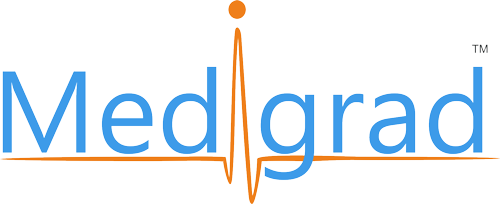Blended Learning in Medical Education: Transforming Healthcare Training for the Digital Age
The landscape of medical education has undergone a revolutionary transformation in recent years, particularly accelerated by global events that forced educators to reimagine traditional learning paradigms. With 69% of students worldwide expressing preference for fully online, hybrid, or blended learning options, the medical education sector has embraced innovative approaches that combine the best of digital and traditional teaching methodologies.
This evolution represents more than just a response to external pressures—it reflects a fundamental shift toward more effective, accessible, and personalized medical training. For healthcare professionals seeking specialized knowledge through fellowship courses and online courses, understanding these emerging trends becomes crucial for making informed decisions about their educational journey and career advancement.
The Post-Pandemic Paradigm Shift in Medical Training
The COVID-19 pandemic served as an unexpected catalyst for medical education reform, fundamentally altering how healthcare professionals approach learning and skill development. Remarkably, 70.7% of study respondents reported increased confidence in the effectiveness of online teaching and learning during the first few weeks of the COVID-19 pandemic, demonstrating a significant shift in attitudes toward digital learning methodologies.
Post-pandemic research reveals a strong preference for hybrid didactics, combining in-person and virtual learning, indicating that the future of medical education lies not in choosing between traditional and digital approaches, but in strategically integrating both. This hybrid model has proven particularly effective for fellowship courses after MBBS in specialized fields such as diabetology, cardiology, and family medicine, where theoretical knowledge must be seamlessly combined with practical clinical experience.
The transformation extends beyond mere delivery methods to encompass fundamental changes in curriculum design, assessment strategies, and learner engagement techniques. Medical institutions worldwide have recognized that effective courses for doctors must accommodate diverse learning styles, varying schedules, and the practical demands of clinical practice.
Evidence-Based Benefits of Blended Learning Models
Research consistently demonstrates that blended learning approaches in medical education yield superior outcomes compared to purely traditional or entirely online methods. Hybrid teaching has emerged as a prevalent approach and is anticipated to persist as a defining trend in future teaching reforms worldwide, reflecting its proven effectiveness in healthcare education contexts.
The flexibility inherent in blended learning models addresses critical challenges faced by practicing physicians pursuing additional qualifications. Healthcare professionals can access theoretical components through online diabetes courses or other specialized programs while maintaining their clinical responsibilities. This approach proves especially valuable for doctors seeking fellowship courses after MBBS, allowing them to enhance their expertise without interrupting patient care duties.
The medical education market is projected to reach USD 216.75 billion with an 8.37% CAGR by 2032, indicating substantial investment in innovative educational technologies and methodologies. This growth reflects increasing recognition that traditional lecture-based approaches alone cannot address the complex learning needs of modern healthcare professionals.
Technology Integration and Personalized Learning Pathways
Modern blended learning in medical education leverages sophisticated technologies to create personalized learning experiences that adapt to individual needs and learning patterns. Medical education in 2024 and beyond emphasizes customization, personalization, and innovation, moving away from one-size-fits-all approaches toward more targeted educational interventions.
The integration of simulation modules, virtual reality clinical scenarios, and interactive case studies has revolutionized how medical concepts are taught and retained. These technologies prove particularly valuable in fellowship programs where complex clinical decision-making skills must be developed through repeated practice and exposure to diverse scenarios.
Online platforms now offer sophisticated analytics that track learning progress, identify knowledge gaps, and recommend personalized study pathways. For doctors pursuing specialized training, this data-driven approach ensures more efficient use of study time and better learning outcomes compared to traditional methods.
Future Directions and Professional Development Implications
The trajectory of blended learning in medical education points toward increasingly sophisticated integration of artificial intelligence, virtual reality, and adaptive learning technologies. Despite widespread adoption, certain limitations have become apparent, requiring optimization strategies that teachers can employ to enhance teaching effectiveness and students’ academic self-efficacy.
For doctors considering fellowship courses, the evolution toward blended learning models offers unprecedented accessibility and flexibility. Specialized programs can now accommodate working physicians, international participants, and those with diverse scheduling constraints without compromising educational quality or clinical exposure requirements.
The future success of medical education will depend on institutions’ ability to continuously adapt their blended learning approaches based on emerging evidence, technological capabilities, and evolving healthcare needs. This dynamic environment creates opportunities for medical professionals to engage in lifelong learning through flexible, high-quality educational programs that enhance both knowledge and practical skills.
As the medical education landscape continues to evolve, the emphasis on blended learning models reflects a broader recognition that effective healthcare training must be as innovative and adaptive as the medical field itself. The integration of digital and traditional learning methodologies has proven not just necessary but transformative, creating new possibilities for professional development that were unimaginable just a few years ago.
